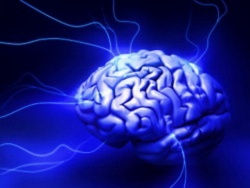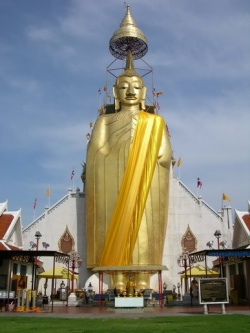Difference between revisions of "The Buddhist concept of Mind"
| Line 46: | Line 46: | ||
Quote from “Mind in [[Tibetan]] Buddhism” by Lati Rinbochay | Quote from “Mind in [[Tibetan]] Buddhism” by Lati Rinbochay | ||
| − | So in [[Tantric]] [[Buddhism]] the [[mind]] of [[clear light]] may be located in the [[central channel]] and other “minds” mounted on winds located at other chakra’s and the [[minds]] may be certain afflictive [[emotions]] and called a [[mind]]. One may do the practice of generating [[ | + | So in [[Tantric]] [[Buddhism]] the [[mind]] of [[clear light]] may be located in the [[central channel]] and other “minds” mounted on winds located at other chakra’s and the [[minds]] may be certain afflictive [[emotions]] and called a [[mind]]. One may do the practice of generating [[Bodhichitta]] – or generating the [[Buddha]] [[mind]] -- |
I myself have observed that you can think but one [[thought]] at a time each of these [[thoughts]] and [[perceptions]] may be called a [[mind]]. The [[thought]] that immediately follows the last [[thought]] would be another “mind”. | I myself have observed that you can think but one [[thought]] at a time each of these [[thoughts]] and [[perceptions]] may be called a [[mind]]. The [[thought]] that immediately follows the last [[thought]] would be another “mind”. | ||
Revision as of 08:10, 6 August 2013
In Buddhist philosophy the mind of a sentient being is not a product of biological processes, but something primordial which has existed since beginningless time and which will be drawn into another body once the present one has died. The mind is capable of existing independently of the body, but an unenlightened mind finds this situation (known as the Bardo) unstable and is drawn into (rather than seeks) another body. In biological terms the mind and body form a symbiotic association.
The mind is neither physical, nor a by-product of purely physical processes, but a formless continuum that is a separate entity from the body. When the body disintegrates at death, the mind does not cease. Although our superficial conscious mind ceases, it does so by dissolving into a deeper level of consciousness, called 'the very subtle mind'. The continuum of our very subtle mind has no beginning and no end....'
The only way that the mind can escape Samsara - being endlessly captured and used by biological systems - is to escape from the recurrent process of death, attraction to a body, and rebirth. Training in the Buddha's Dharma is stated to be the path to individual liberation, which is why a mind born into a human body is regarded as extremely fortunate.
Simply put you state that “Because if mind is consciousness, then I would argue that it does have a beginning and an end. It begins the instant the sperm meets the egg, and then grows and becomes more sophisticated with experience and as the brain develops. What we call consciousness is just the by-product of the brain organ, similar to the eyes seeing” This is a frequently used materialist argument against the existence of the mind as a non-physical continuum. In essence it claims that mind is an 'emergent property' or 'emergent phenomenon' of the brain.
But " modern science itself, quantum analysis to be exact, would show that the mind cannot be an emergent property of the brain or any other physical system, since emergent properties and emergent phenomena are psychological in origin, and require the pre-existence of an observer's mind in order to become manifest emergence- Properties of a complex physical system are emergent just in case they are neither (i) properties had by any parts of the system taken in isolation nor (ii) resultant of a mere summation of properties of parts of the system.
" Roberson on the nature of the mind"
Your world is a probability wave defined by those who look for and observe it. Werner Heisenberg developed the uncertainty principle which tells us that we (the observer) can never exactly know both the position and momentum of a particle. As every observation requires an energy exchange (photon) to create the observed 'data', some energy (wave) state of the observed object has to be altered. Thus the observation has a discrete effect on what we measure. i.e. We change the experiment by observing it! (A large part of their problem though was to continue to assume the existence of discrete particles and thus to try to exactly locate both their position and motion, which is impossible as there is no discrete particle!) Further, because both the observed position and momentum of the particle can never be exactly known, theorists were left trying to determine the probability of where, for example, the 'particle' would be observed. But it was Max Born (1928) who was the first to discover (by chance and with no theoretical foundation) that the square of the quantum wave equations (described by the Wave Structure of Matter as Wave-Density) could be used to predict the probability of where the particle would be found. Since it was impossible for both the waves and the particles to be real entities, it became customary to regard the waves as unreal probability waves and to maintain the belief in the 'real' particle. Unfortunately (profoundly) this maintained the belief in the particle/wave duality, in a new form where the 'quantum' scalar standing waves had become 'probability waves' for the 'real' particle. Thus all matter exists only once actually observed. The material world requires an observer to manifest. Thus modern quatum theory would suggest that matter is in fact manifested by the observer, i.e. the mind. It would seem then that modern physicists are in fact members of the Cittamatra (Mind Only) School of Buddhism.
The first Buddhist Philosopher to comment on the separate nature of mind and matter was Acharya Nagarjuna who simply expressed it in this form. " Mind and body have two separate natures. The first instant of the mind you are experiencing arose from the preceding instant of the mind in Bardo or if you will your previous life. Just as your body did not arise from a “mind” but rather from the act of fertilization of an egg and sperm from other bodies, your mind did not arise from your body. "
To see the truth of this argument one must have done the mediation required to develop the self awareness to perceive that mind is not simply composed of those mental functions most people believe is their “mind”. This superficial conscious mind you talk to while your reading or argue with when making a decision.
I would like to restate that the purpose of the Buddhist science and analysis of the mind is not to give a scientific definition of the mind but to develop a functional description that allows the practitioner to observe his own mental process’s and use those observations to overcome delusion. The Buddhist science of mind is basically a system of understanding and observing mind with mind. This science has developed over a couple thousand years and there are many texts on mind as it is paramount in Buddhist practice. Starting with the Dhammapada were Buddha states that mind is paramount to various and different schools of Buddhism mind has been at issue.
THE MONOLITICH MIND:
Modern westerners refer to the mind as if it were an object, a single thing a monolithic structure contained within itself. We may see it as intellect itself or the power to reason do analysis. But essentially we see it as a unity.
THE MANY MINDS OF BUDDHISM:
Buddhist mind science defines “mind” as “Luminous and knowing”. Another translation might be that which is clarity and cognizes. In either case Luminosity or clarity refers to the nature of mind while knowing and clarity refers to its function.
WARNING – WARNING – WARNING— BEWARE WESTERN STUDENTS –
Ok you say my mind, her mind; its mind is Luminous and knowing. STOP RIGHT THERE – dislodge you conceptual frame work of analysis – remove your underlying assumption of “THE MONOLITICH MIND”
“Mind and its types” (Sanskrit and Tibetan words from which the English is translated are in parentheses:
“Consciousness ( jnana, shes pa) awareness (buddhi, blo) and knower (sanvedana, rig pa) are synonymous: they are the broadest terms among those dealing with the mind. Any mind (chitta, sems) or mental factor (chitta, sems byung) is a consciousness, is an awareness, is a knower. These terms should be understood in an active sense because MINDS ARE MOMENTATY CONSCIOUSNESS which are active agents of knowing. In Buddhism mind is not conceived to be merely a general reservoir of information or just the brain mechanism, but to be individual moments of knowing, the continuum of which makes up our sense of knowing.”
Quote from “Mind in Tibetan Buddhism” by Lati Rinbochay
So in Tantric Buddhism the mind of clear light may be located in the central channel and other “minds” mounted on winds located at other chakra’s and the minds may be certain afflictive emotions and called a mind. One may do the practice of generating Bodhichitta – or generating the Buddha mind --
I myself have observed that you can think but one thought at a time each of these thoughts and perceptions may be called a mind. The thought that immediately follows the last thought would be another “mind”.
Two different (but basically similar) systems were developed for the learning and study of these “minds” by the esoteric Buddhist. Remember these systems were not devised to give scientific definitions but functional ones that allow the practitioner to observe his own mental process’s and use those observations to overcome delusion.
These systems are the Sautrantika and the Prasangika .
These systems divide the process of luminosity and knowing up into different discreet types and allow you to be aware of what is happening as you cognize.
Example: Five sense consciousnesses
- Eye sense consciousness
- Ear sense consciousness
- Nose sense consciousness
- Tongue sense consciousness
- Body sense consciousness



